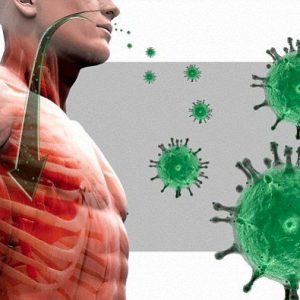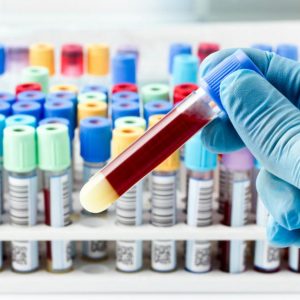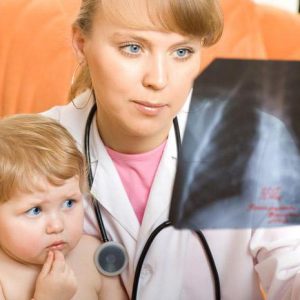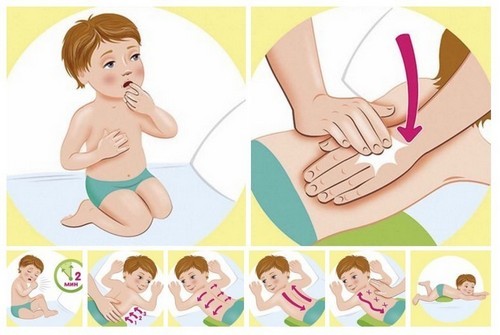21 October 2017 in the media appeared information that in some regions of the Russian Federation, there was an outbreak of pneumonia. In particular, outbreaks were recorded in Novgorod, Yaroslavl, Tula, Vladimir and Amur regions.
Almost all sick children attending kindergartens and schools. What was the cause of the epidemic does the risk of this disease and can we prevent it – we will understand in the article.
Pneumonia or lung inflammation is when the inflammatory process involves the alveoli – the bubbles in which gas exchange occurs. The basic cause of this inflammation is infection that enters the lungs through the respiratory tract.
The causative agent of pneumonia can be a bacteria, viruses, fungi. The most frequent staphylococcal, pneumococcal, Mycoplasma, and caused by Haemophilus influenzae, and influenza virus pneumonia.
What is the cause of pneumonia in cases in 2017
According to the health Ministry of Russia in the majority of patients admitted to hospital with signs of pneumonia, was isolated Mycoplasma (M. Pneumoniae), which allowed physicians to diagnose Mycoplasma pneumonia. This microorganism is very common among the Russians. Each year, about 20% of cases of acute pneumonia caused by M. Pneumoniae.

Features of Mycoplasma pneumonia
Infection with Mycoplasma pneumonia are airborne. Suffer from this pathogen is most often children and Teens, but the peak incidence usually falls on the autumn months, these patterns are clearly seen during the present epidemic of 2017.
Mycoplasma pneumonia doctors call atypical, because it flows not like normal pneumonia.
To the characteristics of Mycoplasma pneumonia include:
- Gradual onset.
- Expressed catarrhal symptoms – running nose, redness of the throat.
- A strong cough.
- A slight increase in body temperature. It can grow to large numbers only at 5-7 days of onset.
These features help to explain the fact that mycoplasmal pneumonia during the first days of the disease is often confused with ordinary acute respiratory viral infection (ARVI). For this reason, many children are treated at home and are taken to the hospital only when commonly used in SARS therapy does not give any result and the patient’s condition deteriorates.
To confirm the diagnosis of Mycoplasma pneumonia, the necessary special tests, one clinical symptoms make it very hard. In patients with suspected respiratory mycoplasmosis analyses venous blood by ELISA for the presence of immunoglobulins antimycoplasmal.
If epidemic pneumonia 2017
According to representatives of the epidemiological service of Rospotrebnadzor, the epidemic is too early to say. Incidence of community-acquired pneumonia (the occurrence of which is not associated with the presence of health facilities) for the first 9 months of 2017 in the regions have not even reached the level of 2016. The emergence of recorded cases of pneumonia can be due to a seasonal increase in the incidence of SARS and accompanying this, a weakening of the immune protection of children.

For those who got sick with Mycoplasma pneumonia, this infection also poses no danger. It lends itself well to the therapies available antibacterial drugs. Most importantly, do not delay the visit to the doctor and not to self-medicate.
How to protect yourself from the epidemic of pneumonia 2017
Pneumoniae does not penetrate immediately into the lungs, the first target of its pathogenic actions become the nose, throat, trachea, and bronchi. It is in these organs and starts the inflammatory process. If at this point the immune system can resist the pathogen (if it works well local respiratory protection), at this level, the infection stops and the pneumonia does not develop.
However, it is important not to lose time and be able to help the immune system.

To do this:
- Give the patient to drink more fluids to produced mucus becomes too thick and did not go down into the lungs. It is especially important to observe the drinking regime for children with fever.
- Ventilate the bedroom of the patient and to maintain comfortable conditions of temperature and humidity. Heat, dryness, stagnant air – a direct path to pneumonia.
- Not to treat the patient with drugs, which stops the cough, if such appointments will not make a doctor.
- Not to start arbitrarily antibacterial therapy in the preventive purposes.
Those who are healthy and do not want to deal with the Mycoplasma infection, doctors advise more walk, eat a healthy diet, wash hands frequently and not to visit crowded places. Also, epidemiologists recommend to make all family members vaccinated against influenza, because influenza infection can be combined with a Mycoplasma and cause severe pneumonia. The best time for this vaccination – October-November.



